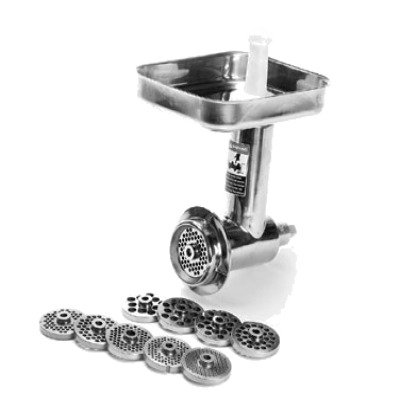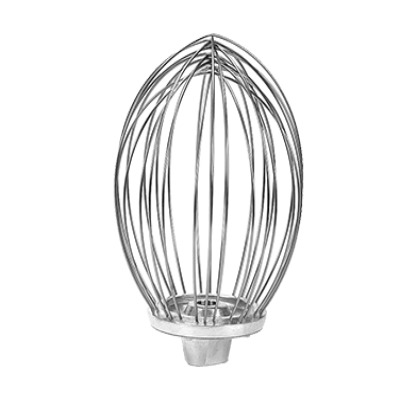The Ultimate Guide to Commercial Tilt Skillets
A tilt skillet, or braising pan, is a common item in most commercial kitchens. Versatile and hard-working, it can be a precise and efficient addition to any food prep regime.
What is a Tilt Skillet?
A tilt skillet is essentially a stove. Running underneath, the skillet is a set of heaters or burners. The skillet can be tilted to allow for food to be poured out. The unit is not only highly versatile, but also very strong in capacity. The ability to maintain set temperatures means that food prep teams can cook many dishes in a short period of time.
One of the key benefits of a tilt skillet is the ability to save time. It is very often used as part of batch production. When several identical meals need to be produced, a braising pan can come into its own. For example, in a hospital a tilt skillet can manage the workload involved in mealtime due to its ability to produce potentially hundreds of meals per hour. A powerful part of a commercial kitchen, larger kitchens use them instead of a standard range top.
What Can a Tilt Skillet Be Used For?
We have already mentioned that tilt skillets are versatile, because of the sheer variety of tasks they perform.
Braising pans have a role in any kitchen and can be used at a facility for cooking pasta and sauces. In addition, tilt skillets are used to create delicious soups. Kitchens can use braising pans to create large amounts of rice and chili.
A tilt skillet can also be used as an oven. When required, a braising pan can be used to roast or bake all kinds of meat and poultry. When you consider the demands of a large commercial kitchen, this can be a very useful addition to the facility. In addition to baking and roasting, the tilt skillet is also a very good griddle. Here, you can have a unit that can prepare bacon, burgers, and any other food item that benefits from the use of a griddle.
A good tilt skillet can also be used as a steamer. With a steam pan inserted, you can use a braising pan for steaming vegetables and seafood easily and efficiently.
Some kitchens also use a skillet as a warmer to thaw items out, or a chiller (when used with ice).
All in all, a tilt skillet is a very versatile part of any commercial kitchen.
The Specifications of Tilt Skillets
They are versatile, and they are powerful. But it is important to know just how these things are put together if you are planning to have them installed in a commercial kitchen.
The size of a modern braising pan is based around several factors. Most manufacturers have recognized that commercial kitchens now come in many sizes and specifications and have created skillets accordingly. The sheer variety of tilt skillet specifications available means that most commercial kitchens can have one installed with no concerns about space.
The most popular sizes for modern tilt skillets are 30 or 40 gallons. This gives a medium to large sized commercial kitchen plenty of capacity. A 30-gallon skillet can prepare up to 350 meals per hour, for example. With a 40-gallon skillet, you are looking at fulfilling hundreds of food orders very quickly and very efficiently.
In addition to the 30- and 40-gallon sized units, you can also purchase smaller units. You can purchase tilt skillets in 12- and 16-gallon sized models. These are often used on countertops, making them very versatile for kitchens with a slightly different physical set up than others. In addition, you can also purchase tilt skillets that come in 15-gallon sizes and are classed as ‘floor units. These are specifically designed for those commercial kitchens that don't have a great amount of practical space.
When it comes to the depth of a tilt skillet, most units are uniform in depth, at ten inches. While modern braising pans come in a variety of styles and looks, you will find that structural features and structural supports follow a certain look and feel. Supports are crafted from low-carbon steel. This material is strong and has excellent resistance against wear and tear.
A tilt skillet can come in an open leg or closed base model. It doesn't really matter which one you choose unless there is a certain aesthetic to consider, or health and safety requirements that cover the area beneath the skillet. It is very much down to the commercial kitchen itself and its managers to decide whether a closed or open style is utilized. A commercial kitchen soon understands how it wants its units to look, so this decision isn’t difficult.
Tabletop models often come with manual tilt mechanisms. Floor units offer electric mechanisms for ease of use, or crank mechanisms for tilting. The skillet tilt pan itself also offers users the option to pour from the front or the center when dispensing food.
What about Installation of the Tilt Skillet?
Tilt skillets are very indispensable in a busy commercial kitchen, so buying one is usually part of a budget. However, making the purchase is not so straightforward, and requires some auditing of kitchen needs and a focus on volume requirements.
It is important to remember that tilt skillets are generally used in kitchens that have a high volume of food preparation. This is what tilt skillets are for. A tilt skillet can take up nearly 50 inches of space. On top of that, a tilt skillet will also need plenty of space around the perimeter for safety and cleaning purposes.
There is usually a special trough in front of the braising pan to catch food, and a trench drain in front of the unit to catch water during cleaning.
Other space requirements include the positioning of the skillet near a faucet. This is vitally important for cooling food when cooking has been completed.
Pour paths are an important factor, too. This the direction in which liquid will be poured. We mentioned earlier how pour paths can be configured for central or front pouring. You need to decide your preference before you purchase a skillet.
Power sources are also important. This has a clear implication when it comes to positioning your tilt skillet in the kitchen. Finally, and on a very practical note, consider the size of the unit. They are usually very bulky and will require a clear entryway for deliveries.
What about Cleaning and Maintenance?
With such a large investment you will need to ensure that the unit is carefully looked after and maintained well. There are some ways in which you can give yourself the best chance of maintaining your tilt skillet for a long time and keep it in good working order.
One of the biggest mistakes commercial kitchens make is using steel wool to clean a tilt skillet. This is generally just not a great idea, because it can cause actual damage to the braising pan. The steel wool can impregnate the surface and cause rust. This can be devastating over time and can create needless expense and reduce productivity.
When it comes to cleaning, it is often a temptation to purchase strong or caustic cleaners. This is not a good idea, because these items can cause severe damage to the unit. In the worst-case scenario, rot can be caused when using a caustic cleaner on a tilt skillet.
Kitchens can purchase rounded edge utensils, which is important, because square edge utensils can bring in something called ‘pitting’ on surfaces. This is essentially scarring the unit’s surface, causing unrepairable damage that may not be repairable.
It is a good idea to think carefully about using cleaning fluids around the skillet. Soap and water are a good mixture for cleaning, but underneath the tilt skillet, it’s very important that not too much fluid is used, because it can cause a shorting of the electrics. Greasing the tilting mechanism is also important and should be done every six months. And the unit should never be turned on for too long without having liquid inside, due to warping of the surfaces.
Finally, keeping the areas and the openings clear of debris is something that should be done on a regular basis. This is essential to keep your skillet working well and clean.
An Indispensable Item
Having a tilt skillet in a commercial kitchen is essential for producing a high volume and variety of meals.
Commercial kitchens must have just a few staple items. The tilting skillet, or braising pan, is one of those items. Looked after and maintained well, it should be a mainstay in the kitchen for years.
About Cook’s Direct
Cook’s provides a full range of commercial kitchen solutions to correctional facilities, institutions and other large foodservice operations across North America. The company was founded in 1997 and is known for its innovative products, strong customer service and overall knowledge of institutional kitchen operations.



















